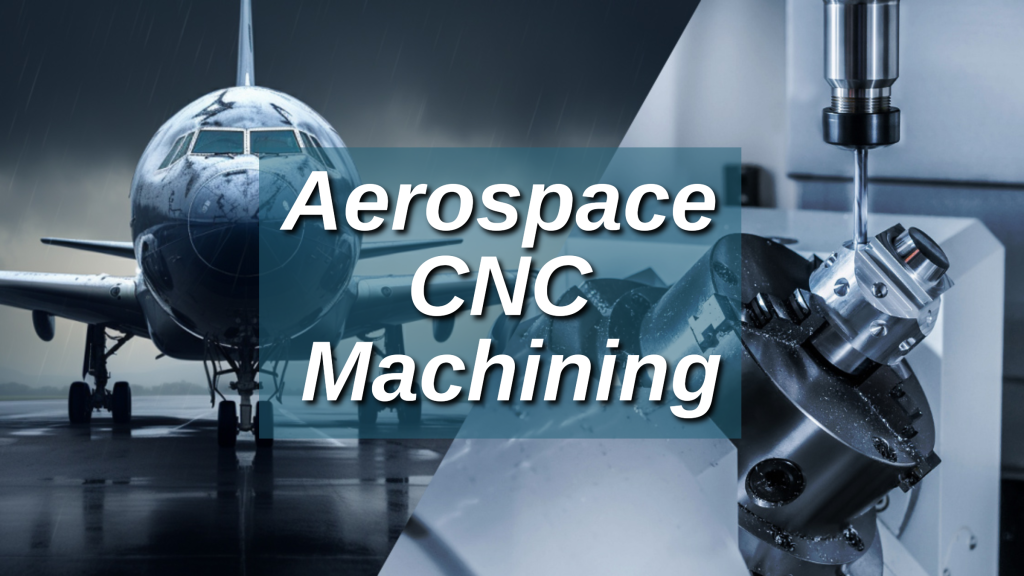
In the high-stakes world of aerospace engineering, where precision, durability, and efficiency are non-negotiable, CNC milling has emerged as a transformative force. Once limited to prototyping or simple part creation, CNC milling now enables manufacturers to machine complex, mission-critical components for aircraft and spacecraft with unmatched accuracy.
In this article, we explore how CNC milling is revolutionizing the aerospace sector—and how providers like Boona Prototypes are contributing to this evolution.
I. Precision at the Micron Level
CNC (Computer Numerical Control) milling allows for exceptional tolerances, often down to ±0.001 mm (±0.00004 inch), essential for aerospace components like turbine blades, engine housings, and structural brackets. This level of precision helps reduce vibration, improve fuel efficiency, and enhance overall flight performance.
At Boona Prototypes, multi-axis CNC milling machines are calibrated for tight tolerance manufacturing, ensuring that every aerospace part meets the most demanding specifications.
II. Capability to Handle Complex Geometries
5-axis CNC milling enables simultaneous movement along five directions, allowing manufacturers to cut difficult, organic shapes—ideal for aerospace components requiring aerodynamic contours. This reduces setup time and enables the machining of highly integrated parts in a single pass.
✅ Example: Turbine blisks, which previously required multiple parts and welds, can now be machined as a single, lighter unit.
III. Aerospace-Compatible Materials
Aerospace applications require components that can withstand high temperature, pressure, and fatigue cycles. CNC milling must therefore accommodate tough, exotic materials.
Common Aerospace Materials Used in CNC Milling
| Material | Properties | Aerospace Application |
|---|---|---|
| Aluminum 7075 | Lightweight, high strength | Airframe components, wing spars |
| Titanium Grade 5 | Corrosion-resistant, heat-tolerant | Engine parts, landing gear, fuselage fasteners |
| Inconel 718 | High strength at high temperatures | Turbine blades, exhaust components |
| Carbon Fiber Plate | Lightweight, fatigue-resistant | UAV frames, satellite panels |
Boona Prototypes offers CNC machining services compatible with titanium, aluminum, stainless steel, PEEK, and more—catering specifically to aerospace-grade material needs.
IV. Real-World Applications in Aerospace
CNC milling is widely used across various aircraft and spacecraft systems:
-
Engine Components: Including impellers, valves, and rotors.
-
Airframes: Milling thin-walled structures such as fuselage ribs and bulkheads.
-
Interior Modules: Customizing panels, trays, and brackets with lightweight composite materials.
-
Satellite Parts: Creating tight-tolerance aluminum panels and mounts.
Visit Boona’s CNC machining projects for real-world examples of precision-engineered components tailored to aerospace requirements.
V. Prototyping and Production Under One Roof
Speed to market is essential in aerospace innovation. CNC milling offers rapid prototyping capabilities, allowing engineers to iterate designs in days, not weeks.
At Boona Prototypes, CNC machining is integrated with 3D printing, vacuum casting, and injection molding, providing clients with end-to-end solutions for both prototyping and mass production.
VI. Benefits at a Glance
Here’s a quick comparison of CNC milling’s benefits in aerospace compared to traditional manufacturing methods:
| Feature | CNC Milling | Traditional Methods |
|---|---|---|
| Tolerance Control | ±0.001 mm | ±0.05 mm or worse |
| Setup Time | Short (especially with 5-axis) | Long, often requiring multiple setups |
| Part Complexity | High (internal channels, blisks) | Limited |
| Prototyping Speed | Fast (same-day or 2-3 days) | Weeks or months |
| Material Versatility | Titanium, Inconel, Carbon Fiber, etc. | Mostly limited to softer metals |
The future of aerospace machining lies in smarter, faster, and more connected systems:
-
AI-driven Toolpath Optimization: Improves surface finish and tool longevity.
-
IoT Integration: Real-time part tracking and predictive maintenance.
-
Digital Twins: Simulate and validate parts virtually before cutting.
Boona Prototypes is constantly investing in new technology, including advanced software and automation systems, to stay ahead of the curve in the CNC machining space.
Conclusion
CNC milling is more than just a manufacturing technique—it’s a technological backbone driving innovation in aerospace. From spacecraft panels to jet turbine components, CNC technology ensures unparalleled quality, precision, and speed.
Companies like Boona Prototypes are pushing the boundaries of what’s possible with aerospace CNC machining, offering material flexibility, advanced 5-axis systems, and integrated prototyping-to-production workflows.
If you’re working on your next aerospace project and require tight tolerances and fast turnaround times, explore how Boona CNC machining services can meet your needs.
FAQs
1. What is CNC milling and how does it apply to aerospace manufacturing?
CNC (Computer Numerical Control) milling is a subtractive manufacturing process where a computer directs rotating cutting tools to remove material from a solid block. In aerospace, CNC milling is essential for creating high-precision components like turbine blades, engine housings, and airframe structures that require extreme accuracy and durability.
2. Why is 5-axis CNC milling important for aerospace parts?
5-axis CNC milling allows for simultaneous movement along five axes, enabling the creation of complex, curved surfaces in a single setup. This is especially important in aerospace where components like impellers, blisks, and wing sections require intricate geometries for aerodynamic efficiency and structural integrity.
3. What materials are commonly used in aerospace CNC machining?
Aerospace-grade CNC milling frequently uses materials such as:
-
Aluminum alloys (e.g., 7075): Lightweight and strong.
-
Titanium: Excellent strength-to-weight ratio and corrosion resistance.
-
Inconel & Superalloys: High-temperature strength for engine parts.
-
Carbon Fiber & Composites: Lightweight and fatigue-resistant for structural components.
Boona Prototypes offers machining for all these materials.
4. How does CNC milling contribute to weight reduction in aircraft?
CNC milling allows engineers to create thin-walled, hollow, or lattice-structured parts that maintain strength while reducing mass. This lightweighting is crucial for improving fuel efficiency and flight performance, especially in commercial and defense aerospace applications.
5. Is CNC milling suitable for aerospace prototyping?
Yes, CNC milling is widely used for rapid prototyping in the aerospace industry. Companies like Boona Prototypes provide fast turnaround for prototype parts with tight tolerances, allowing for quick design iterations and reduced time to market.
6. What kind of tolerances are achievable with aerospace CNC machining?
CNC milling machines used in aerospace can achieve tolerances as tight as ±0.001 mm (±0.00004 inches), making them ideal for producing precision-critical components such as bearings, gears, and sealing surfaces in engines and hydraulic systems.
7. Can CNC milling be used for low-volume production or is it only for mass manufacturing?
CNC milling is highly flexible and suitable for both low-volume production and high-volume runs. It is especially effective in aerospace where parts often need to be custom-made or produced in small batches for different aircraft models or prototypes.
8. How does CNC machining compare with 3D printing for aerospace parts?
While 3D printing is ideal for complex, lightweight geometries and rapid prototyping, CNC milling offers:
-
Higher surface finish quality
-
Better material strength (no layer bonding)
-
Wider compatibility with aerospace metals
Many aerospace companies combine both methods—3D print the rough shape and finish with CNC milling, a service also available at Boona Prototypes.
9. What are the cost benefits of CNC milling in aerospace?
Despite higher upfront investment, CNC milling reduces costs in the long run through:
-
Lower error rates and rework
-
Higher material yield
-
Faster turnaround times
This makes it more cost-effective over time, especially when producing complex or high-tolerance components.



